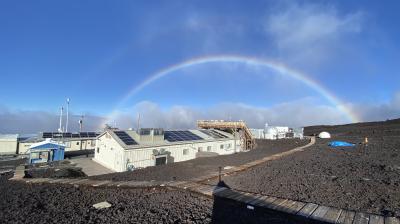WMO Greenhouse Gas Bulletin - No. 21
- CO2 impacts climate today and for many centuries
- Concerns mount about carbon sinks like forests and oceans
- Rising temperatures are accompanied by more extreme weather
- Strengthened monitoring is vital to inform action
The latest analysis of observations from the WMO Global Atmosphere Watch (GAW) in situ observational network shows that the globally averaged surface concentrations for carbon dioxide (CO2), methane (CH4) and nitrous oxide (N2O) reached unprecedented highs in 2024, with CO2 at 423.9±0.2 ppm, CH4 at 1942±2 ppb and N2O at 338.0±0.1 ppb.
These values constitute, respectively, increases of 52%, 166% and 25% above pre-industrial (before 1750) levels. The record increase in CO2 from 2023 to 2024 was most likely due to a combination of natural variability and continued emissions of fossil fuel CO2. For CH4, the increase from 2023 to 2024 was lower than the one observed from 2022 to 2023 and also lower than the average annual growth rate over the last decade (2014-2023). For N2O, the increase from 2023 to 2024 was lower than that observed from 2022 to 2023 and slightly lower than the average annual growth rate over the last decade (2014-2023). The National Oceanic and Atmospheric Administration (NOAA) Annual Greenhouse Gas Index (AGGI) shows that from 1990 to 2024, radiative forcing by long-lived greenhouse gases (LLGHGs) increased by 54%, with CO2 accounting for about 81% of this increase.
Video
About the Greenhouse Gas Bulletin series
This Bulletin represents the latest analysis of observations from the WMO GAW Programme.




